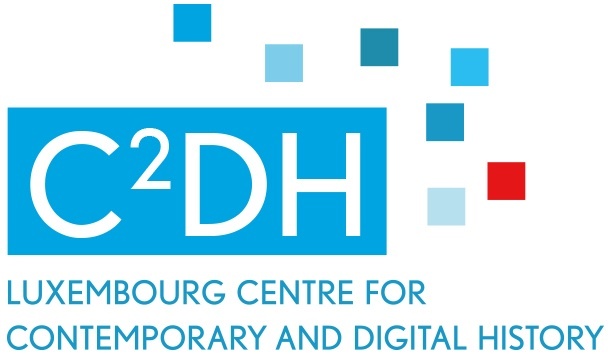After the summer break, the Digital History and Hermeneutics DTU assembled for its Summer Colloquium on 28 August. The programme promised a strategic first part and a topic oriented second part.
Juliane Tatarinov (Post-Doc coordinator DTU-DHH), introduced the team to the newly developed communication strategy after establishing the DTU project website as the major dissemination tool in terms of internal interdisciplinary exchange as well as an outreach medium. The website functions as a new layer of the Trading Zone 1 and can be seen as an interdisciplinary subproject within the group that allows to experiment with new ideas and formats. She furthermore encourages to think about the project design in terms of possible outcomes and content development for the next academic year. The discussion evolved especially around the notion of the “interdisciplinarity” as a concept that is not clearly defined and contains different expectations from one discipline to another.
Benoit Majerus (Associate Professor of European History) then suggested thinking about publication formats, backing up the envisioned papers and monographies by linking and presenting visualisations of data, interactive elements and databases that were built during the research process. The digital presentation would then accommodate one of the core strengths of the projects, namely the digital literacy of the PhD students. During the discussion on how to do this in the individual cases, it soon became apparent that this is a problem computer scientists have already been facing for a long time, and their experience – and the best practice – can be used by the humanities.
[masterslider id=”11″]
DTU- DHH Summer-Colloquium 2019
Christoph Schommer, Associate Professor of Artificial Intelligence, put forward his outline of a new course “Data Science in the Humanities” within the Bachelor of Computer Science programme at the University of Luxembourg planned for the next summer term. He would like to integrate as many DTU researchers as possible to contribute to single sessions for discussing their projects as relevant case studies. The idea was welcomed by the plenum, and the course planning can start following this discussion.
In the second half of the colloquium, which contained three presentations of interim results, project leader Andreas Fickers (Director of C2DH) made a start by summarising crucial points from his paper co-written with Tim van der Heijden (former Post-Doc coordinator of the DTU-DHH): Inside the Trading Zone: Thinkering in a Digital History Lab(currently under review). He gave special focus to the shared conceptual framework of digital hermeneutics and interspaces and links between the elements of the hermeneutic process.
Martin Uhrmacher, Assistant Professor of Modern History, then showcased his work on the Digital Historical Atlas of Luxembourg. It covers the timeframe of 17th – 21th centuries, and the project is on the eve of launching its Beta version in October. He explained the problems that had arisen from having to deal with a huge gap of existing historical maps of approximately 100 years in the 19th and early 20th centuries. All available existing maps are used as layers for the digital mapping process, thus the lack of data over such a long period constitutes a big problem. Aerial photos – especially those made during the WWII, helped to fill the gaps.
Last but not least, DTU doctoral researcher Marleen De Kramer presented her work on reconstructing the medieval Larochette Castle located above the town of Larochette in central Luxembourg. She explained to the audience how she had arrived at the decisions of which tool to use to create a model of the castle and what problems she had faced when classifying levels of detail, levels of speculation and of accuracy, and what she did to make those levels visible to the prospective viewer of the model. She furthermore presented some first results that would have not been possible to get without computer-based simulation.


